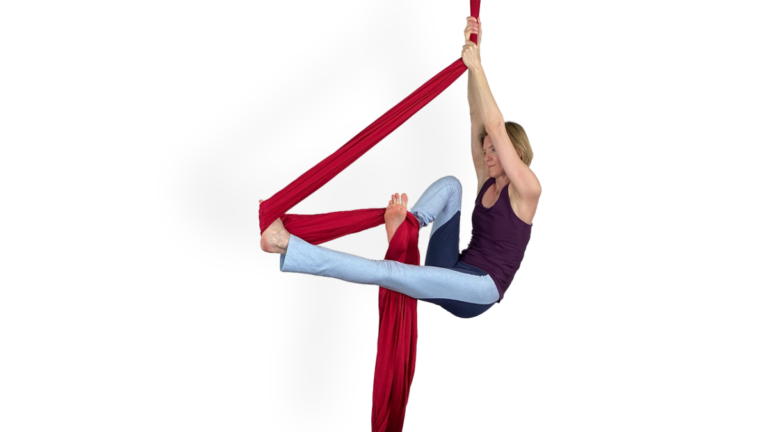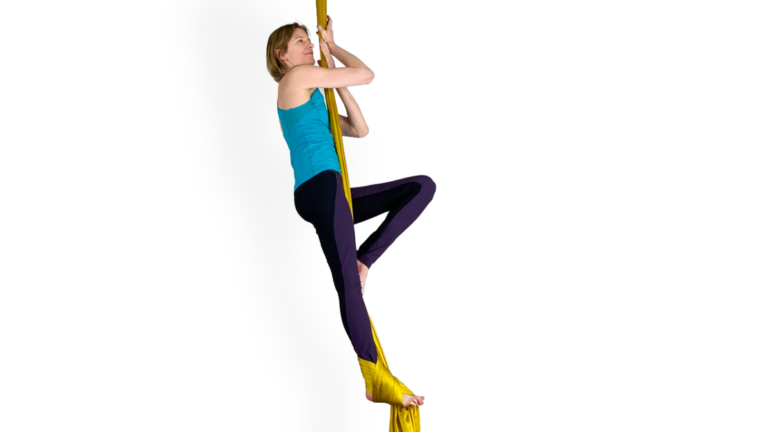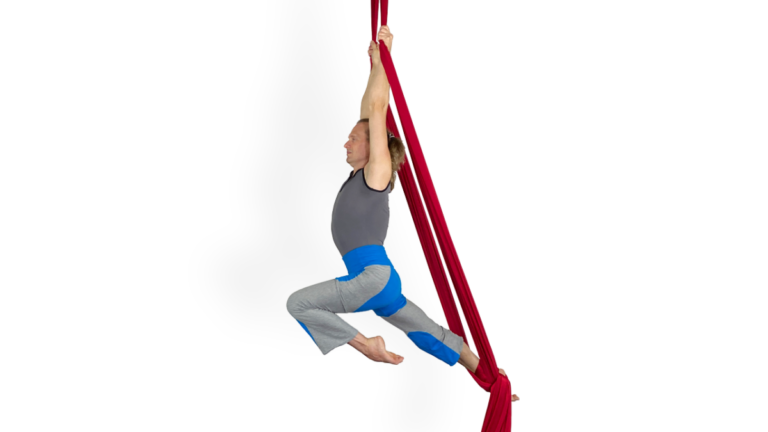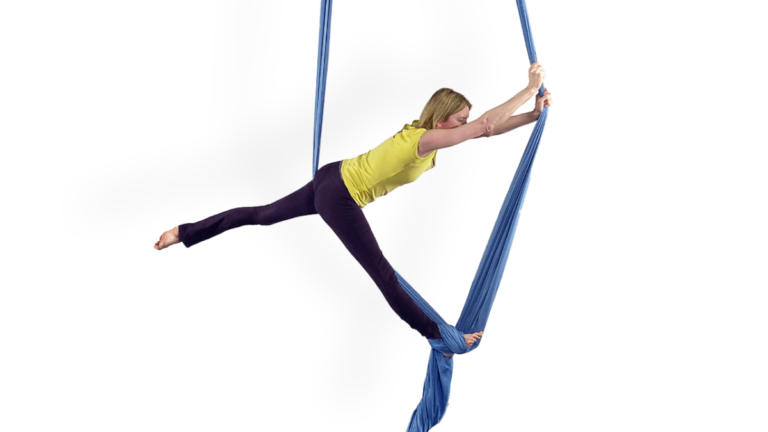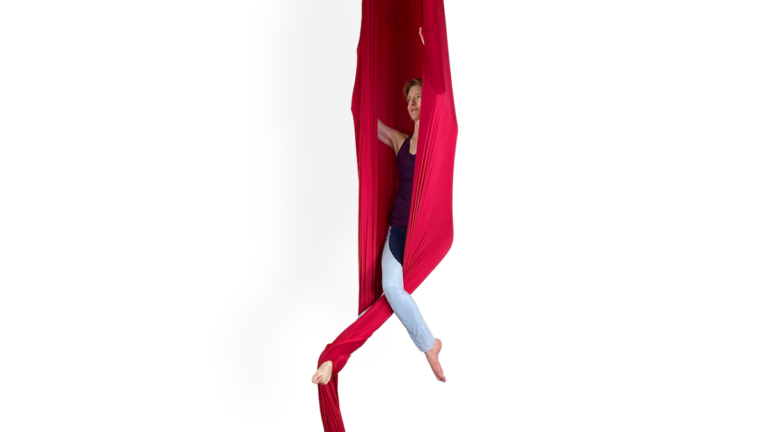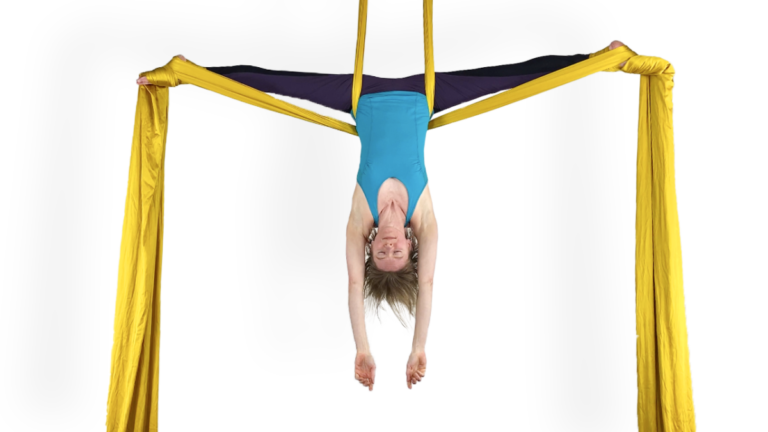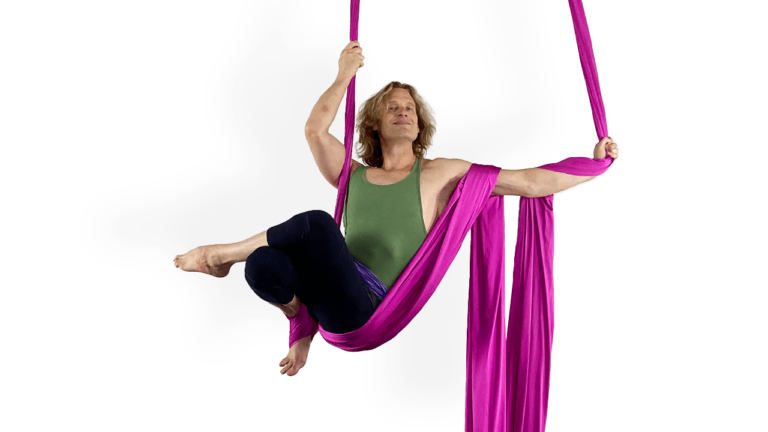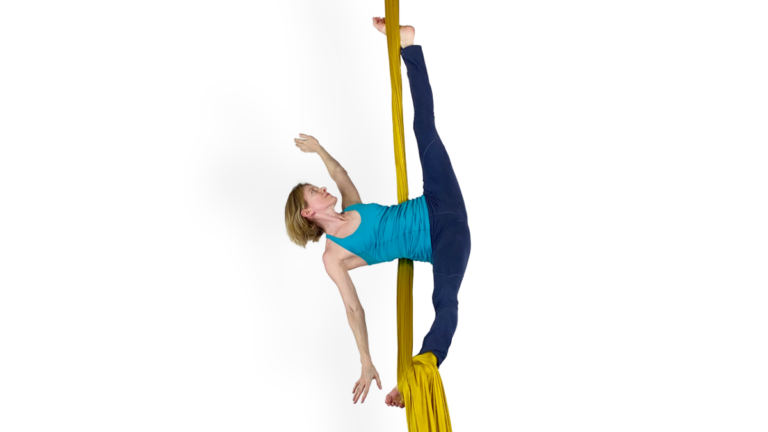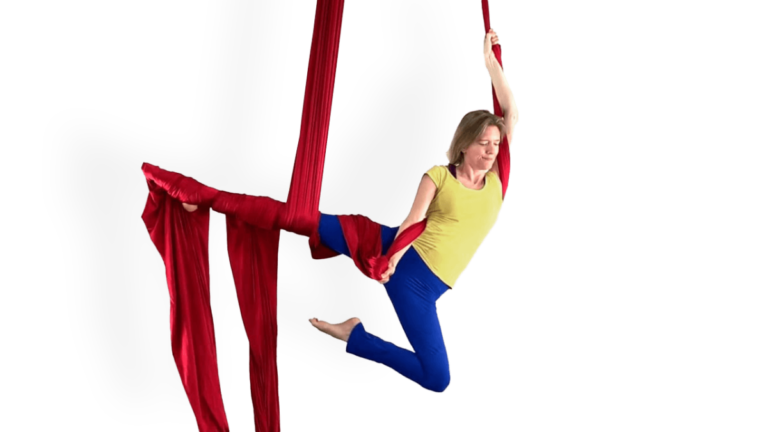Aerial Silks Footlocks
Aerial Silks Footlock Skills & Moves
What is an aerial silks foot lock?
An important part of learning aerial and circus arts is to understand and master the fundamentals. Aerial silks footlocks are one of the most important supports for beginners and intermediate students to learn. They allow you to feel secure on the silk and they help to strengthen your body.
They enable you to learn more advanced aerial skills. Being able to do a footlock will help you continue progressing in the aerial arts.
Basic Silks Footlock Versions
The two basic variations of silks footlocks are a Figure 8 Footlock and a Dancer Footlock. Each of these types of footlocks have a single leg version and a double leg version.
Figure 8 Footlock from the Air is a staple in our beginner level aerial silks curriculum, and good technique makes the footlock clean and comfortable every time. We teach this after students are comfortable with a Figure 8 Footlock from the Ground, Basic Stand, Basic Climb, and a variety of footlock skills from the ground.
We have a lot of tips, tricks, drills, and suggestions for this skill because students often struggle to control the slack as they first learn this skill. Good technique will allow the foot to slide when you want it to, to hold the fabric taut when you want it to, and to step into a comfortable footlock that doesn’t squeeze the foot. This is a skill that students use often as they progress through our Level 1 curriculum.
A Dancer Footlock is one that comes from a Dancer Wrap. It’s different than a Figure 8 Footlock because we step backwards to get into it, and forwards to exit. We teach a single dancer footlock before teaching doubles, because knowing different types of footlocks is useful for different skills and choregraphies. And because putting on one is easier at first than putting on two.
We teach this skill during our beginner level curriculum, and we use it in many transitions and sequences because stepping forward to exit the footlock makes many interesting transitions possible. Many students find that this footlock is more comfortable than a figure 8 footlock as well, and end up defaulting to this one more often as they learn new footlock skills on aerial silks.
Different types of aerial silks footlocks moves.
It’s important to separate the footlock skills into different levels. When you are first learning the silks footlocks it is a lot of steps to remember and a footlock can be uncomfortable at first. Some of the more advanced footlocks are much more complicated and will be too confusing for someone just beginning to understand the footlock and may require too much endurance while in a footlock.
Beginner Aerial Silks Footlocks Skills.
Front Arabesque is a beautiful skill that many of our students learn in their first class. It involves a strong arched body position, and it can be done from a footlock as shown in this video, or from standing on a fabric knot.
Learning to keep the body strong and engaged in an arched body shape is an important skill in aerial and Front Arabesque can be used to start training it simply and safely. This skill is part of a sequence we typically teach to new students right away, that also includes Back Arabesque and Standing Side Lean. With this sequence students learn what it feels like to go forwards, backwards, and sideways from a footlock on aerial silks.
Bow and Arrow is a fun and simple footlock skill that we teach to our beginner students. It involves creating tension and pressing out into the fabric for support.
This skill is great for teaching students how to use their legs in a smart and strong way while in footlocks. To create nice lines in this skill requires a good connection to the back of the body. The tensions created in this skill are similar to other beginner level skills like Box Pose, and come into play later in more advanced skills like Pillar Splits and even Cupid.
This skill works from a Figure 8 Footlock or a Dancer Footlock.
Cocoon is a classic beginner level aerial silks footlock skill, and there is a lot to explore within it. Cocoon involves elements of leg roll-up, and students need to keep their footlocked leg and foot strong for protection in this skill.
We teach this skill in our beginner level classes and interemediate level students often return to it or skills like it. Opening up the fabric lends itself to creativity and expression and we enjoy giving our students time to explore it. This skill does build upon simpler skills like Back Arabesque that new students learn from a footlock. And it can prepare students for more advanced variations that they’ll see in intermediate levels, like cocoon from a hip key and similar variations.
Intermediate Aerial Silks Footlocks skills
These skills are going to be a little more challenging and will require more stamina and strength to safely get in and out of them.
Crossback Straddle is a classic aerial silks skill and it can be a nemesis for many students at first. There are countless entrances and countless exits from this skill, and those entrances and exits are detailed in related videos below. This video focuses on achieving the inversion once the cross is in place behind the back.
Achieving the inversion requires a straight leg straddle up and there is a lot of nuance in the hip movement as well as the timing of the pull up and when to pull and when to push on the fabric. We have so many troubleshooting drills attached to this skill, because it’s such an exciting skill to achieve.
Detailed instruction for a variety of entrances including but not limited to Georgia Twist, Emma Sit, Splits Roll-Up, Jacket Entry, and many more are included in other videos that are linked on this page as well.
Inner Thigh Illusion Roll is an aerial silks move that pivots around the inner thigh and creates the illusion of a roll. It can be done with either more or less inversion, and it can be done forwards or backwards. Inner Thigh Illusion Roll, also sometimes called Dinner Roll, can also be done from many different starting positions. This video tutorial covers the forward and the backward variation of this move, including the progressions we use to teach it.
We’ve discovered and developed many different variations of this move, including from hip keys, thigh hitches, russian climbs, and more, and those variations are detailed on this page. This move requires really strong shoulders with good mobility, and our many ground drills can help supplement and prepare the body for this move.
Middle Straddle up the fabric is one of our student’s favorites, because it’s dramatic and empowering. The way that we teach this skill also prepares students for skills like Wheeldowns and Star Drops later on.
Middle Straddle (also called Vertical Splits or Sideways Straddle) can be done with the fabrics together or separated. We teach it to our intermediate level students after they are comfortable with Push Me Pull You and a variety of other straddling skills.
Middle Straddle requires active flexibility and the way that we teach it makes it accessible to students who are less flexible in their straddles. Mastering this skill can lead to skills like Arrow Flip, and mastering this skill gives students many options in choreography including skills to sequence with when exiting from a Crossback Straddle.
We consider this skill a gateway to many others because of the specific cues and progressions we use to teach it, because it helps with straddle stability and moving through space with the body as one distinct unit.
Advanced Aerial Silks Footlocks Skills
More advanced aerialist have developed the strength to support themselves without footlocks so many of the advanced skills don’t require them anymore. However, there are some advanced footlock skills. Here is an example.
Music Box, also sometimes called Mermaid Roll Up, is a beautiful and classic skill, but it can be tough on the shoulder if it’s practiced or taught without a strong focus on supports. Our main goal when teaching this skill is keeping students’ shoulders happy and healthy so this video goes through the cuing we use.
Music Box is a single footlock skill that we teach in our intermediate level classes, once students are comfortable with related supports like SIngle Crucifix in the Air and Roll Up skills like Crocodile Roll Up. Our cuing focuses on using both arms equally and extending strongly through the leg, to keep the entire body engaged and involved in the movement of this skill.
These moves are just some of many that can be accomplished with a footlock. For continuing education, see what else you can do with a footlock, simply browse the many levels and skills of aerial art.
Tips for Learning Aerial Silks Footlocks
1. Always start small.
Don’t try intermediate or advanced skills if you’re just beginning. Learning aerial arts is a long journey and a daily practice, which is why we’ve broken down our skills into progressions for you
2. Avoid common mistakes.
For each skill in our library, you’ll find lessons on common pitfalls and advice for how to avoid them. Simply scroll down the page on each video lesson.
3. Don’t go it alone.
If you get stuck, you’ll want to have a coach or community to go to for help. Become a member today to access the AFO community.
Research about Aerial Silks:
For further reading about aerial silks, circus training, and aerial arts, look here:

